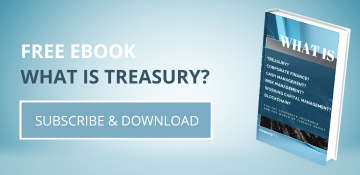PSD2, Open Banking and their major impact
| 24-9-2019 | François de Witte | treasuryXL |
This training program at the Febelfin Academy prepares participants for 2 major challenges of the upcoming years in banking: PSD2 & Open Banking. This will have a major impact on the financial ecosystem and will create new challenges.
The goal of this training course is to:
- Make participants aware of the ways PSD2 & Open Banking affect banks and other players in Europe;
- Understand the impact of the technical requirements with a focus on strong customer authentication;
- Outline the risks and responsibilities of the involved parties within the new regulatory framework;
- Understand the impact of Open Banking APIs (Application Programming interfaces;
- Understand the impacts of the PSD2 & Open Banking the financial ecosystem;
- Evaluate the risk and opportunities created by PSD2 & Open Banking the banks and the new players;
- Determine action plan for your company.
Target Group
This training course can be followed by multiple target groups:
- Managers of a banks/PSP’s/Fintechs involved with the payments and digital strategy
- Product Development Experts (payments)
- Service providers involved with Open Banking
- Corporate Treasurers
- Compliance officers
Advanced: offers practice-based applications to complement the theoretical knowledge already acquired through the “basic level” courses (in-depth learning).
There is no specific preparation required. For persons who are less acquainted with PSD2 and payments, some pre-course reading material can be made available.”
Program
This training program prepares participants for two key challenges of the upcoming years in banking: PSD2 and Open Banking.
Part I: PSD2 and Open Banking – overview:
- PSD2: Scope and Basic Principles
- XS2A (Access the Accounts)
- New Players: AISP and PISP
- SCA (Strong Customer Authentication)
- Consent and SCA
- Requirements for the Banks and TPPs
- Timetable
- Trends in Open Banking
Part II: Open banking architecture: Implications for banks and the New Players
- XS2A: Risks, Responsibilities and obligations of the related parties
- XS2A: Availability Requirements
- Setting up the SCA in Practice
- SCA: Optimization of the Exemptions
- Security requirements ensuring consumer protection
- Addressing the fraud and cyberattack risks
- Technology: building interfaces – APIs (Application Programming Interfaces)
- European initiatives to standardize the interfaces
- Practical aspects – Role of Aggregators
- Group Exercise
Part 3: PSD2: Potential impact on the market and next steps
- Global impact on the market – New Players
- Impact on the Payments Landscape
- Impact on the Cards and Digital Payment Instruments
- Impact on the Merchants and the e-commerce
- Impact on corporates
- FinTech Companies: ready to disrupt banks?
- Implication on the Digital Banking Strategy
- The new role of competition and cooperation
- Action Plan for Banks and New Players
- Group Exercise
Practical information
Duration: One day training
Date: October 10, 2019
Hours: 9AM-5PM (6 training hours)
Location: Febelfin Academy, Aarlenstraat/Rue d’Arlon 80, 1040 Brussels
Additional information: This training course will be given in English
REGISTER TODAY
 François de Witte
François de Witte
Founder & Senior Consultant at FDW Consult / Managing Director and CFO at SafeTrade Holding S.A.
[button url=”https://www.treasuryxl.com/community/experts/francois-de-witte/” text=”View expert profile” size=”small” type=”primary” icon=”” external=”1″]
[separator type=”” size=”” icon=””]








 In the financial industry an option is an instrument, based on financial derivatives, that enable the buyer of the option to obtain the right, but not the obligation, to buy or sell an underlying product/asset at an agreed price on or before a certain date in the future. As simple descriptions go, this requires a lot of understanding about different subjects. It is the intention of this article to clearly explain all the terms mentioned above.
In the financial industry an option is an instrument, based on financial derivatives, that enable the buyer of the option to obtain the right, but not the obligation, to buy or sell an underlying product/asset at an agreed price on or before a certain date in the future. As simple descriptions go, this requires a lot of understanding about different subjects. It is the intention of this article to clearly explain all the terms mentioned above. Op donderdagavond 14 december 2017 vindt er een Extra Voorlichtingsavond plaats voor de Postgraduate opleiding Treasury Management & Corporate Finance, aan de Vrije Universiteit Amsterdam. Dit is de laatste kans voor geïnteresseerden in de opleiding die het programma in het Nederlands willen volgen.
Op donderdagavond 14 december 2017 vindt er een Extra Voorlichtingsavond plaats voor de Postgraduate opleiding Treasury Management & Corporate Finance, aan de Vrije Universiteit Amsterdam. Dit is de laatste kans voor geïnteresseerden in de opleiding die het programma in het Nederlands willen volgen.
 Both from student perspective as well as from educators we receive signals they want to invest in training and education. Some articles have been written about what is out there (read
Both from student perspective as well as from educators we receive signals they want to invest in training and education. Some articles have been written about what is out there (read 
